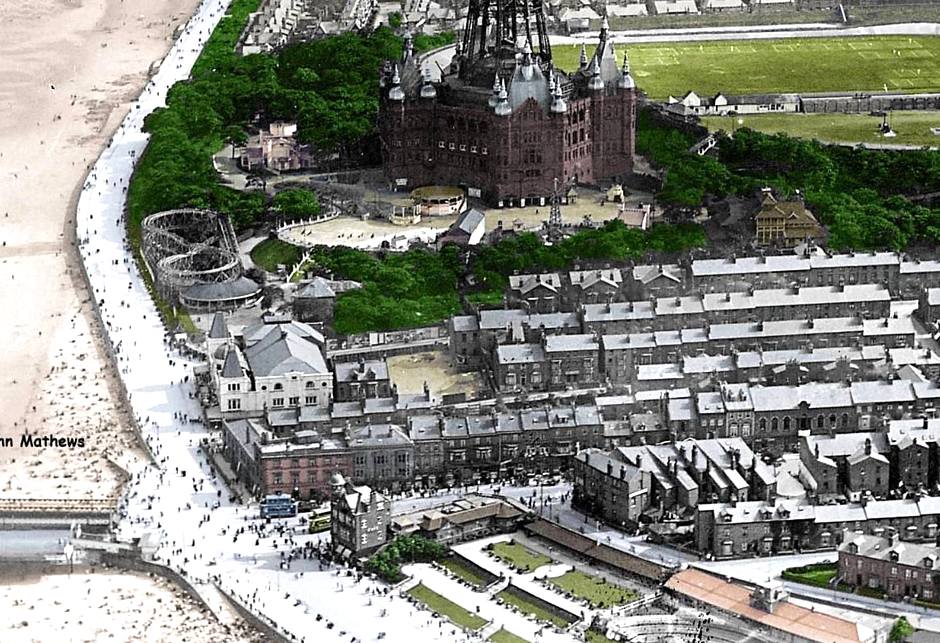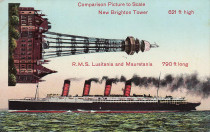NEW BRIGHTON TOWER
Work began on the tower on 22 June 1896. finished 1900 at a cost of £120,000. The architects were Maxwell and Turk of Manchester. It sat in sumptuous gardens with an enormous 2000 capacity
ballroom at its base offering views of as far as Manchester and Snowdon in North Wales. In 1914, it was closed to the public following the outbreak of the First World War. With closure, lack of
maintenance caused the steel superstructure to rust. The tower was eventually taken down between 1919 and 1921.
Despite the tower's removal, its ballroom continued to be used for almost the next 50 years. Many famous acts visited the New Brighton venue including Little Richard The Beatles and the Rolling
Stones. In 1969, the building was destroyed by fire.
In the 1970s, the area where New Brighton Tower once stood was redeveloped as River View Park.
Demolition of New Brighton tower April 1921
The end of the Tower
The end of the Tower came when it was destroyed by fire on Saturday 5th April 1969, the heroic attempts by the fire brigade who fought the flames for hours was in vain, the walls started to collapse and this magnificent building just died. All that was left was the shell. It took 25 pumps and 4 turntable ladders to contain the fire. The boating lake had been drained dry. A lifetime of memories just vanished in a few hours. It had to be dismantled and the site cleared. A developer bought the site and built a housing estate called River View Park. The remainder of the land was used for recreational activities.
Billy Mann's Minature Railway
On a small plot of land on the esplanade showman Tommy Mann ran his pleasure grounds, where in 1947 he opened a 18 inch gauge miniature railway using the Sentinel locomotive and coaching stock on a tightly curved layout incorporating a balloon loop. Services were later handled by a Ruston industrial diesel locomotive, ending the miniature era on the New Brighton line. The line eventually closed in 1965 and thoughts of an 18 inch gauge miniature line faded from memories.










